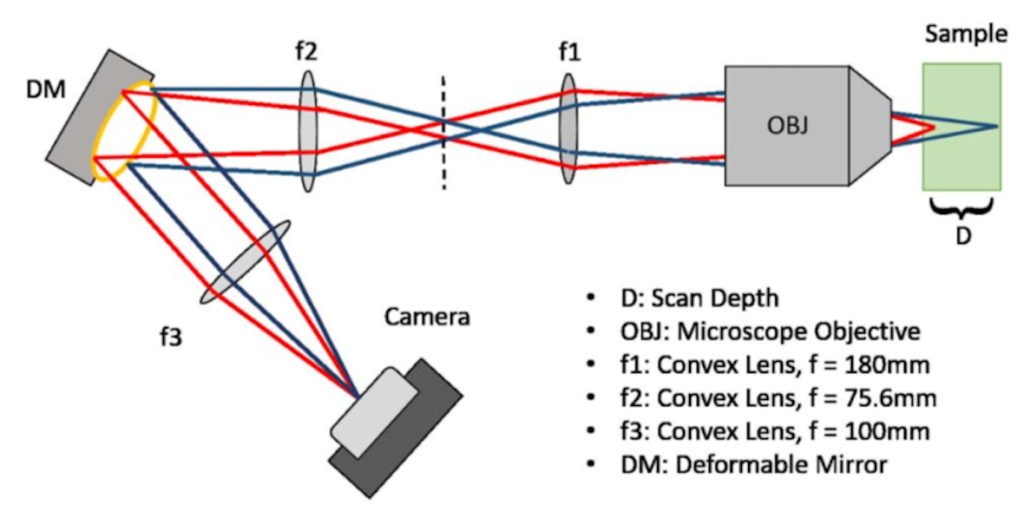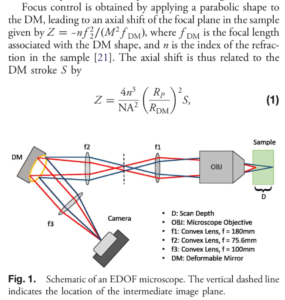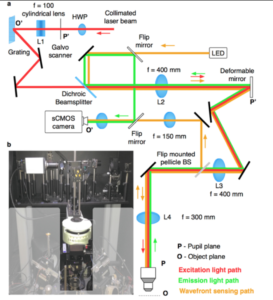Remote focusing with deformable mirrors

There are lots of ways to quickly change the z-focus plane, including tunable lenses, piezo objective movers, and a coupled objective. What is the best way to change the Z-focus plane? It’s probably using a deformable mirror. They can be updated at kHz rates (settling time around 0.02 – 0.10 ms), they can actively compensate for all sorts of optical aberrations (spherical aberration occurs in various defocusing approaches, e.g., tunable lenses), light loss is minimal, and they provide a good range of z-travel. How much travel? For an answer to that, check out the Shain et al. paper from Jerome Mertz’ group at Boston University.

Given that deformable mirrors on the market have stroke lengths up to 80 microns, this implies travel of a millimeter or more. For example, for NA = 0.6, n = 1.33, S = 80, and Rp/Rdm = 1, the travel is about 2.1 mm.
Martin Booth (who co-authored the original coupled-objective method of remote focusing with Tony Wilson) published this nice related work recently (which cites Jerome’s paper linked to above). Žurauskas et al. note that:
Furthermore, the DM [deformable mirror] used for fast remote focusing, can be simultaneously employed to cancel sample induced aberrations and further increase SNR to boost practical imaging rates.
Žurauskas et al. included wavefront sensing in their setup (below). This is great, and the paper has a lot of useful information. That said, if you’re interested in trying this out, it’s not essential to do wavefront sensing. You can just put a DM in a conjugate plane in your scan engine and optimize using the image as feedback (e.g., adjust the first 10 or so Zernike coefficients of the DM command, one-at-a-time, to increase mean brightness) to get a feel for how it could work in your system.


A couple other ‘newer’ ways to do this are out there now too:
1) https://www.revibrooptics.com/products
2) https://www.pi-usa.us/en/tech-blog/laser-beam-focus-control-in-cutting-welding-applications-with-high-speed-deformable-mirror/
Thanks!